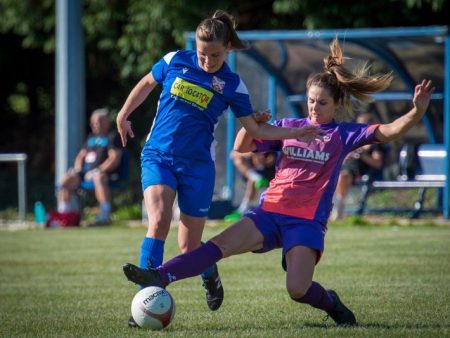If you’re a football fan looking to expand your knowledge of the beautiful game, then the Bolivia Liga Profesional is definitely worth exploring. Established in 1977, the Bolivian football league has a rich history, with many notable teams, players, and moments that have helped shape the sport in Bolivia. In this article, we’ll provide you with a complete guide to the Bolivia Liga Profesional, including its history, evolution, and current state.
History of the Bolivia Liga Profesional
The Bolivia Liga Profesional, which is also known as the Bolivian Primera División, has a rich history that dates back to the early 20th century when football began to gain popularity in Bolivia. Let’s take a closer look at the exciting journey of one of the oldest football leagues in South America.
The Early Years of Bolivian Football
In 1927, the first national football championship took place in Bolivia. However, it wasn’t until 1950 that a professional league was established in the country. The inaugural season featured six teams, and it was won by Club Bolívar, one of the most successful clubs in the history of Bolivian football.
The Founding of Bolivia Liga Profesional
In 1977, the Bolivia Liga Profesional was founded, featuring 12 teams from across the country. The Strongest and Bolivar emerged as the most successful teams in the early years of the league. The Strongest won the first two editions of the league in 1977 and 1978, while Bolivar won three consecutive titles from 1979 to 1981.
The Growth of Bolivia Liga Profesional
In the 1980s and 1990s, the Bolivia Liga Profesional continued to grow, with an increase in the number of teams and the introduction of playoffs to determine the league champion. The league underwent a rebranding in 1991 and became known as the Liga del Fútbol Profesional Boliviano (LFPB), which it has continued to be called until today.
The Present Day Bolivia Liga Profesional
Today, the LFPB features 16 teams and operates a promotion and relegation system with the second-tier league, the Nacional B. The current format of the league involves a round-robin tournament where each team plays each other twice. The top eight teams then enter a knockout stage, culminating in a two-legged final to determine the league champion.
Evolution of the Bolivia Liga Profesional
The Bolivia Liga Profesional has undergone significant changes in its format and structure over the years. These changes have brought about a more competitive league that has attracted both local and international attention.
Adoption of the Apertura and Clausura System
In 2002, the Bolivia Liga Profesional adopted the Apertura and Clausura system, which is similar to other leagues in South America. This system involves splitting the league into two halves, with each half consisting of a round-robin tournament followed by playoffs. The winner of each half then plays in a final to determine the overall champion of the league.
This system has increased the number of matches played by each team, providing more opportunities for players to showcase their skills. Additionally, the playoff format has brought about a more exciting end to the season, with fans eagerly anticipating the final match.
Introduction of a Relegation System
In 2010, the Bolivia Liga Profesional introduced a relegation system to the league. Before this, the league operated on a promotion/relegation system, with the bottom team in the league being relegated to the second division. However, the new system meant that the bottom two teams in the league at the end of the season would be relegated to the second division.
This change has made the league more competitive, as teams are now fighting to avoid relegation at the end of the season. It has also provided more opportunities for teams in the second division to compete at the highest level, as they now have a chance to be promoted to the top league.
Other Changes
Aside from these significant changes, the Bolivia Liga Profesional has undergone other changes over the years, such as changes to the number of teams in the league and the number of matches played each season. These changes have been made with the aim of improving the league’s competitiveness and increasing its appeal to fans.
Current State of the Bolivia Liga Profesional
The Bolivia Liga Profesional, also known as the Bolivian Primera Division, is the top-tier football league in Bolivia. In this article, we will take a closer look at the current state of the league, including its teams, history, challenges, and plans for the future.
Team Lineup
As of now, the Bolivia Liga Profesional is composed of 16 teams, with Bolivar being the most successful team in the league’s history. Bolivar has won 29 league titles and is a consistent powerhouse in Bolivian football. Other notable teams include The Strongest, Oriente Petrolero, and Wilstermann, all of which have a significant following and rich history in the league.
Recent Challenges
Despite the league’s success on the pitch, it has faced some significant challenges in recent years. One of the most significant issues that the league has faced is financial difficulty, which has impacted the ability of teams to attract top players and invest in the infrastructure necessary to maintain a high level of play. This, in turn, has led to a lack of investment in infrastructure, such as stadiums and training facilities, which can have a negative impact on the quality of play.
The league has also struggled to attract the attention of fans and investors, which has limited its growth potential. This is partly due to the league’s relative lack of exposure on the international stage, as well as its reputation for being a relatively low-scoring league. However, there are plans in place to address these issues and improve the league’s overall profile.
Plans for the Future
Despite the challenges facing the Bolivia Liga Profesional, there are reasons to be optimistic about its future. One of the most significant recent developments has been the creation of a new governance structure that aims to improve the league’s management and transparency. This includes the establishment of a new league office and the implementation of new regulations aimed at promoting fairness and equality among teams.
In addition, there are plans to invest in new stadiums and facilities, which should help to improve the quality of play and make the league more attractive to fans and investors. This investment will not only benefit the league itself but will also have a positive impact on the local communities in which the teams are based.














